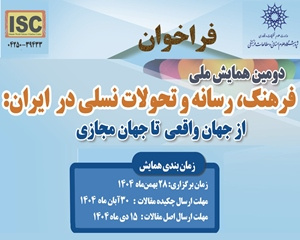ارزیابی توان اکولوژیک و ارائه راهبردهای معیشت پایدار در منطقه زاگرس با تأکید بر جنبه های حقوقی و محیط زیستی (مطالعه موردی: منطقه آبخیز دنا) (مقاله علمی وزارت علوم)
درجه علمی: نشریه علمی (وزارت علوم)
آرشیو
چکیده
هدف: هدف از این تحقیق ارزیابی توان منطقه آبخیز دنا و ارایه راهبردهای معیشت پایدار است. روش شناسی تحقیق: این تحقیق از نوع کاربردی است که از الگویی تلفیقی برای ارزیابی توان منطقه زاگرس مرکزی استفاده گردید. ابتدا پارامترهای اکولوژیک برای ارزیابی توان اکولوژیک شناسایی و سپس آماده سازی لایه ها با عملیات ژئورفرنس، رقومی سازی و به هنگام سازی انجام گرفت. در این مطالعه از داده های حاصل از تصاویر سنجنده ETM+ ماهواره لندست 7 و IRSاستفاده شده است. لایه ها در نرم افزار ArcGIS, version9.2 روی هم گذاری و طبقه بندی شدند. در گام بعد، برای تدوین راهبردها از تکنیک SCORE و مراجعه به آرای کارشناسان خبره استفاده گردید. یافته ها و بحث: نتایج نشان داد 9/20 درصد از منطقه نیاز به حفاظت داشته و 8/19 درصد نیز مناسب برای جنگل داری است. کمترین درصد کاربری مناسب برای منطقه متعلق به حفاظت منابع آبی و پس از آن توسعه سکونتگاهی است. تحلیل محیط درونی و بیرونی مدیریت معیشت پایدار در منطقه ی مطالعاتی نشان می دهد که فرصت ها و قوت ها نسب به محدودیت ها و ریسک ها از میانگین امتیاز بالاتری برخوردارند. نتیجه گیری: در نهایت، 11 راهبرد مدیریتی و حقوقی برای معیشت پایدار در منطقه آبخیز دنا استخراج گردید.Assessing capacity and providing sustainable livelihood strategies in the Zagros region with emphasis on legal and environmental aspects (Case study: Dena watershed)
The aim of this study is to assess the potential of Dena watershed and provide sustainable livelihood strategies. This is a practical goal that used a combined model to assess the strength of the Central Zagros region. First, ecological parameters were identified to assess the ecological potential, and then layers were prepared by georeferencing, digitization, and timing. The study used data from Landsat 7 and IRS satellite imaging images. The layers overlapped and classified in the ArcGIS software, version9.2. In the next step, SCORE technique and reference to expert opinions were used to formulate the strategies. The results showed that 20.9% of the region needs protection and 19.8% is suitable for forestry. The lowest percentage of suitable use for the region belongs to the protection of water resources and then residential development. Analysis of the internal and external environment of sustainable livelihood management in the study area shows that opportunities and strengths have a higher average score than restrictions and risks. Finally, 11 management and legal strategies for sustainable livelihoods were developed in the Dena watershed.








